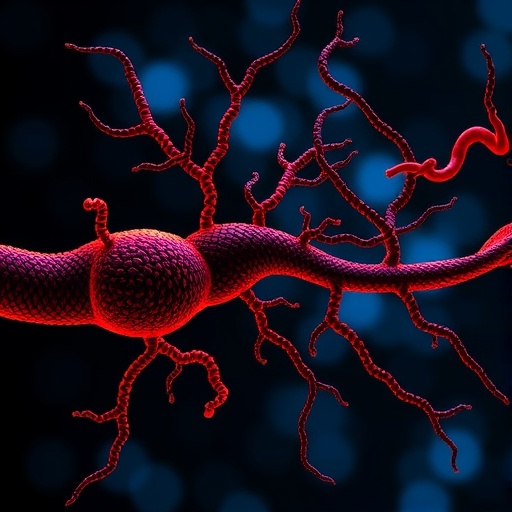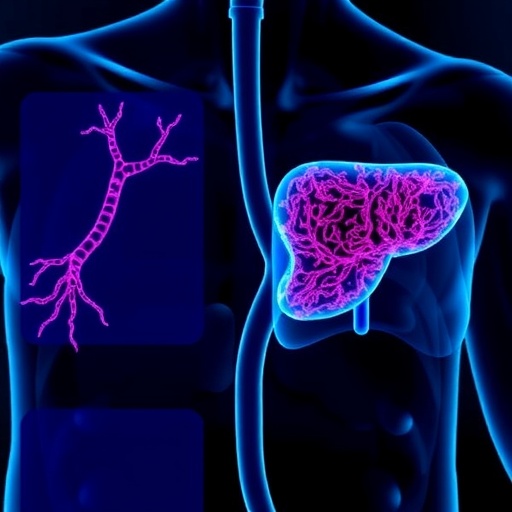A groundbreaking study recently published in Medical Oncology has shed unprecedented light on the WNT signaling pathway, emphasizing its striking evolutionary conservation and profound implications in cancer development and progression. The research offers a panoramic understanding of how this ancient cellular communication route operates not only across diverse species but also within the complex landscape of human oncology. This comprehensive exploration unravels the intricate molecular choreography that maintains cellular homeostasis and, when dysregulated, drives tumorigenesis.
The WNT signaling pathway, long recognized as a pivotal mechanism in embryonic development and tissue regeneration, has emerged as a key player in cancer biology. Its evolutionary conservation across metazoans underscores a fundamental role indispensable to multicellular life. By analyzing genetic and proteomic data spanning from primitive organisms such as cnidarians to higher mammals including humans, the study highlights remarkable preservation of WNT pathway components. This conservation suggests that the core machinery of WNT signaling has been maintained due to stringent selective pressures, indicating its critical functional relevance through evolutionary timescales.
At the molecular level, the WNT pathway transmits extracellular cues to the nucleus, regulating gene transcription programs essential for cell proliferation, differentiation, and apoptosis. Central to this cascade is β-catenin, whose cytoplasmic stabilization and nuclear translocation are tightly regulated by a destruction complex. Aberrations in this intricate regulation have been implicated in a broad spectrum of cancers, notably colorectal, breast, and hepatocellular carcinomas. The study meticulously dissects how mutations in pathway components such as APC (Adenomatous polyposis coli), AXIN, and β-catenin lead to constitutive activation of WNT signaling, fueling uncontrolled cellular growth and malignant transformation.
.adsslot_UMV10ANyBa{ width:728px !important; height:90px !important; }
@media (max-width:1199px) { .adsslot_UMV10ANyBa{ width:468px !important; height:60px !important; } }
@media (max-width:767px) { .adsslot_UMV10ANyBa{ width:320px !important; height:50px !important; } }
ADVERTISEMENT
The researchers employed comparative genomics to map the evolutionary trajectories of key WNT pathway genes. Their findings reveal conserved motifs and domains critical for protein-protein interactions and signal transduction fidelity. These motifs, preserved with minimal variation across species, suggest that any mutational disruption could have deleterious consequences. This conservation also provides a strategic foundation for the development of targeted therapies, as drugs designed against these conserved elements may achieve high specificity and potency across different cancer types.
Moreover, this study illuminates the dualistic nature of WNT signaling, functioning as both a guardian of tissue integrity and a driver of oncogenic processes. In healthy adult tissues, WNT signals participate in stem cell maintenance and wound healing. However, oncogenic mutations or aberrant ligand-receptor interactions can flip this beneficial signaling into a tumor-promoting force. The nuanced understanding of this balance offers novel perspectives on how to modulate WNT activity therapeutically without precipitating adverse effects.
Intriguingly, the research also delves into the crosstalk between WNT signaling and other major cellular pathways such as Notch, Hedgehog, and TGF-β. This intricate interdependence forms a complex signaling network that governs cell fate decisions. Unraveling these interactions elucidates why targeting WNT alone has historically proved challenging in clinical settings and underscores the necessity for combinatorial approaches to effectively disrupt malignant signaling circuits.
Through high-throughput sequencing and functional assays, the study identifies several non-canonical WNT pathway branches that are evolutionarily conserved yet distinctly regulated in cancer contexts. These pathways, which do not rely on β-catenin, contribute to cellular processes like migration and polarity, profoundly affecting metastasis and tumor microenvironment dynamics. Understanding these alternative routes opens new avenues for precision oncology, where interventions can be tailored to the molecular signature of individual tumors.
The temporal and spatial regulation of WNT signaling is another focal point of this research. The authors highlight how epigenetic modifications, including DNA methylation and histone acetylation, influence WNT pathway activation states. Such epigenetic landscapes, inherited or modified during oncogenesis, add further complexity to the control of this signaling axis and represent potential biomarkers for cancer prognosis and therapy responsiveness.
Clinical correlations presented in the paper outline how aberrant WNT signaling serves as a prognostic indicator in various malignancies. Elevated expression of WNT ligands and receptors, as well as mutations leading to stabilized β-catenin, consistently associate with poor clinical outcomes. These insights reinforce the potential of WNT pathway components as diagnostic markers and therapeutic targets, emphasizing the urgent need for drugs capable of modulating this pathway with precision and minimal toxicity.
Innovative therapeutic strategies inspired by this evolutionary and molecular knowledge are beginning to emerge. The study discusses novel small-molecule inhibitors, monoclonal antibodies, and ligand traps designed to intercept WNT signals at multiple levels. By targeting both canonical and non-canonical signaling branches, these agents aim to transcend limitations of previous attempts and hold promise for enhancing cancer treatment efficacy.
The evolutionary lens employed by the authors not only illuminates the resilience and adaptability of the WNT pathway but also offers clues about vulnerabilities that arise when ancient mechanisms are co-opted by cancer. This perspective fosters a deeper appreciation of why certain cancers become refractory to conventional treatments and highlights evolution-informed drug design as a frontier in oncology.
Furthermore, the paper addresses emerging challenges such as tumor heterogeneity and the dynamic evolution of signaling networks during disease progression. By integrating evolutionary biology with cutting-edge molecular oncology, the study advocates for a paradigm that views cancers as evolving ecosystems, where signaling pathways like WNT adaptively respond to selective pressures imposed by the tumor microenvironment and therapeutic interventions.
This detailed and integrative understanding of WNT signaling heralds a new era in cancer research, where interventions extend beyond single-gene targets to encompass the entire regulatory network contextualized in evolutionary history. The research thereby lays a robust foundation for developing versatile, durable therapies capable of overcoming resistance and achieving sustained tumor control.
In closing, this comprehensive investigation into the evolutionary conservation and cancer implications of the WNT signaling pathway not only advances our fundamental biological knowledge but also translates into tangible clinical potential. It invites the scientific community to rethink traditional approaches to cancer therapy and to embrace the sophisticated, layered complexity of conserved signaling pathways as both a challenge and an opportunity for transformative breakthroughs.
Subject of Research: Evolutionary conservation and cancer roles of the WNT signaling pathway.
Article Title: Evolutionary conservation and cancer implications of the WNT signaling pathway.
Article References:
Prajapati, D., Ambere, G., Mathure, D. et al. Evolutionary conservation and cancer implications of the WNT signaling pathway. Med Oncol 42, 434 (2025). https://doi.org/10.1007/s12032-025-02950-8
Image Credits: AI Generated
Tags: cancer development and progressioncellular communication in cancercellular homeostasis and dysregulationembryonic development and WNTevolutionary conservation of WNTgenetic and proteomic analysis of WNTmolecular choreography in oncologymulticellular life and WNTselective pressures in evolutiontumorigenesis mechanismsWnt signaling pathwayβ-catenin role in cancer





